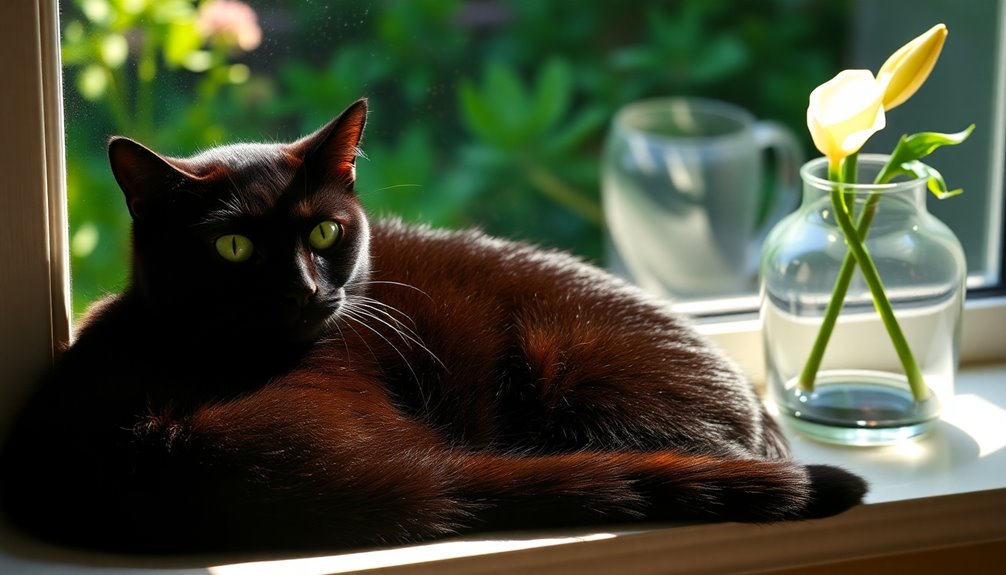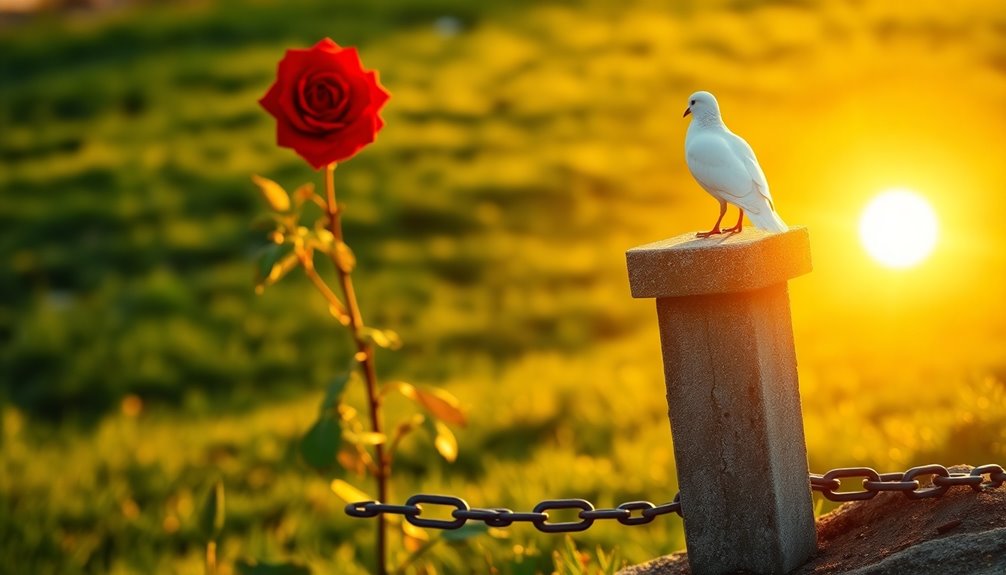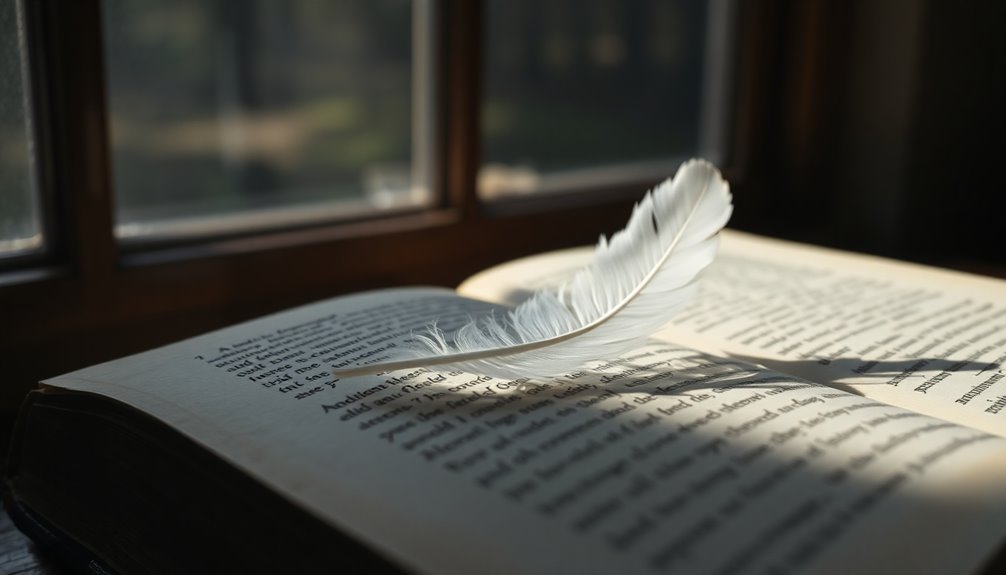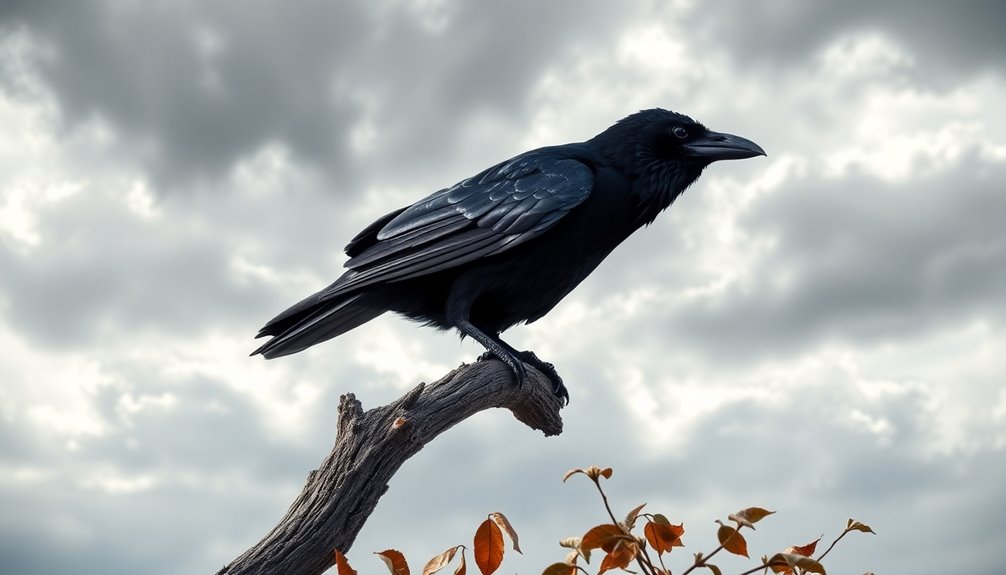Cats are full of meaning! They symbolize independence and curiosity, often inspiring you to explore and embrace adventure. Many cultures believe that cats bring good luck and even hold magical qualities. Their playful nature reminds you to enjoy spontaneity, while their loving purrs offer comfort and companionship. Cats also symbolize emotional support, helping reduce stress in your life. In dreams and stories, they connect to transformation and rebirth. Whether they're protecting homes from pests or filling your heart with joy, cats bring many important lessons. Stick around to uncover even more fascinating aspects of these wonderful creatures!
Key Takeaways
- Cats symbolize independence and self-reliance, reflecting their ability to thrive alone and adapt to various situations.
- They represent good luck and are often associated with magic and mystery in different cultures.
- Cats embody curiosity and mischief, inspiring adventure and spontaneity in life.
- Their grooming behavior symbolizes self-care and cleanliness, promoting a sense of well-being.
- As emotional companions, cats provide comfort and support, reducing stress and enhancing happiness.
Overview of Cat Symbolism
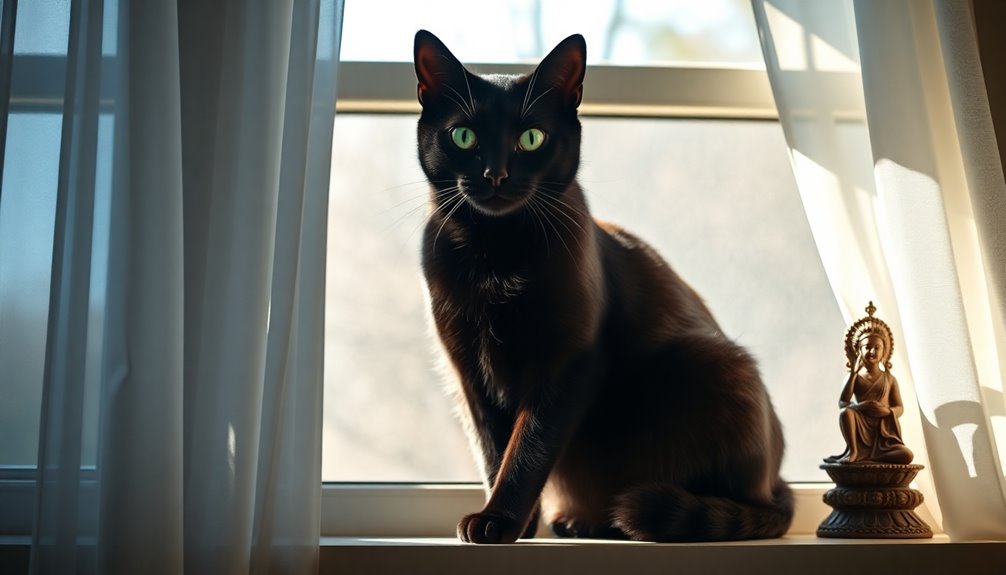
When you think about cats, it's hard to overlook the rich tapestry of symbolism they carry. Cats are often seen as symbols of independence and self-reliance. They encourage you to embrace your own intuitive nature and engage in self-reflection.
In many cultures, cats bring good luck and are associated with magic and protection. For example, in ancient Egypt, cats were revered and linked to the goddess Bastet, who symbolized home and fertility.
As you watch a cat explore its surroundings, you might feel inspired to step out of your comfort zone. Cats embody curiosity and mischief, reminding you to seek adventure and spontaneity in life. Their playful nature invites you to discover new things and enjoy every moment.
Cats also serve as spirit animals, guiding you between the physical and spiritual domains. They symbolize transformation and rebirth, highlighting the importance of recognizing hidden truths in your life.
With their calming presence, cats can reduce stress and anxiety, offering emotional support and companionship. So, whether you have a cat or admire them from afar, remember the powerful symbolism they carry and the lessons they can teach you.
Cultural Significance of Cats
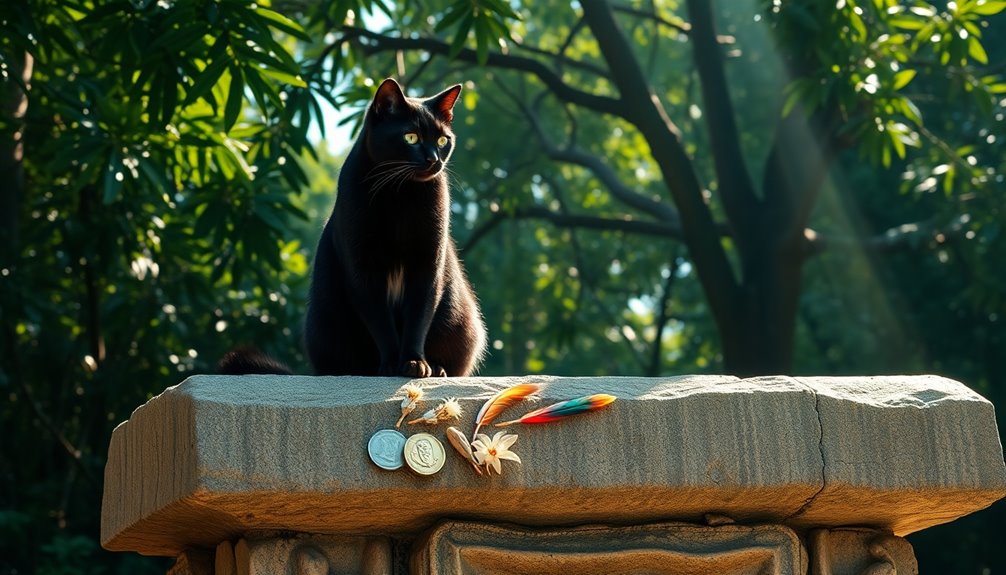
Cats have played an important role in many cultures throughout history!
In ancient Egypt, people saw them as sacred animals, honoring them with special burials and treating them like royalty.
Meanwhile, folklore in Europe turned cats into mysterious creatures linked to both luck and superstition, showing just how much they've fascinated us across different societies.
Ancient Egyptian Reverence
How did ancient Egyptians come to revere cats so profoundly? In ancient Egypt, cats were considered sacred animals. They were closely linked to the goddess Bastet, who represented protection, fertility, and domesticity. People believed that cats had magical qualities, and their mere presence could ward off evil spirits. Because of this, families treated them with great respect and love.
Cats weren't just pets; they were part of the family! When a cat passed away, it was common for families to mummify their beloved companions. This way, their furry friends could accompany them in the afterlife.
Archaeological findings show that cats were often depicted in Egyptian art, such as hieroglyphs and sculptures. This further reinforced their status as symbols of grace and beauty.
The connection between cats and the divine even led to laws protecting them. It became a crime to harm or kill a cat, showcasing how much they were revered in society.
Ancient Egyptians truly saw cats as special beings, deserving of admiration and care. Their love for these creatures reminds us of the deep bond humans can share with animals, even today!
Folklore and Superstitions
Throughout history, cats have woven their way into the fabric of folklore and superstition across various cultures. In ancient Egypt, cats were cherished as sacred animals linked to the goddess Bastet. They symbolized protection, fertility, and divine grace, leading to their mummification and burial with pharaohs.
Isn't that fascinating?
In medieval Europe, cats often faced a different fate. Many believed they'd magical qualities and connected them to witchcraft. This created a mix of fear and reverence.
You might find it interesting that the Japanese have the Maneki-neko, or beckoning cat, which is a lucky charm thought to bring good fortune.
In Islam, cats are seen as clean animals, and the Prophet Muhammad adored them, adding to their spiritual significance.
Let's not forget the intriguing beliefs surrounding black cats! In many cultures, they can symbolize both good and bad luck. Some folks think that seeing a black cat might bring misfortune, while others see them as protectors, bringing prosperity.
Behavioral Traits and Meanings

The behavioral traits of felines offer rich symbolism that reflects their unique personalities and emotional states. When you watch a cat groom itself, it symbolizes self-care and cleanliness. This instinctual behavior helps them find comfort and regulate their emotions.
Their natural hunting skills, like stalking and pouncing, showcase their independence and adaptability. Cats remind us to be resourceful in our own lives!
Imagine a cat purring softly beside you. That gentle sound can indicate happiness or even stress, showing their role as emotional companions. Cats communicate their feelings, helping you understand their needs.
You might also notice them kneading soft surfaces with their paws. This adorable behavior signifies comfort and a desire for nurturing, reminding you of the importance of security.
And let's not forget about their playfulness! Cats love to explore and engage in mischievous antics, encouraging you to embrace spontaneity and joy. Their playful nature reinforces the idea that life is an adventure to be enjoyed.
Spiritual Connections and Dreams
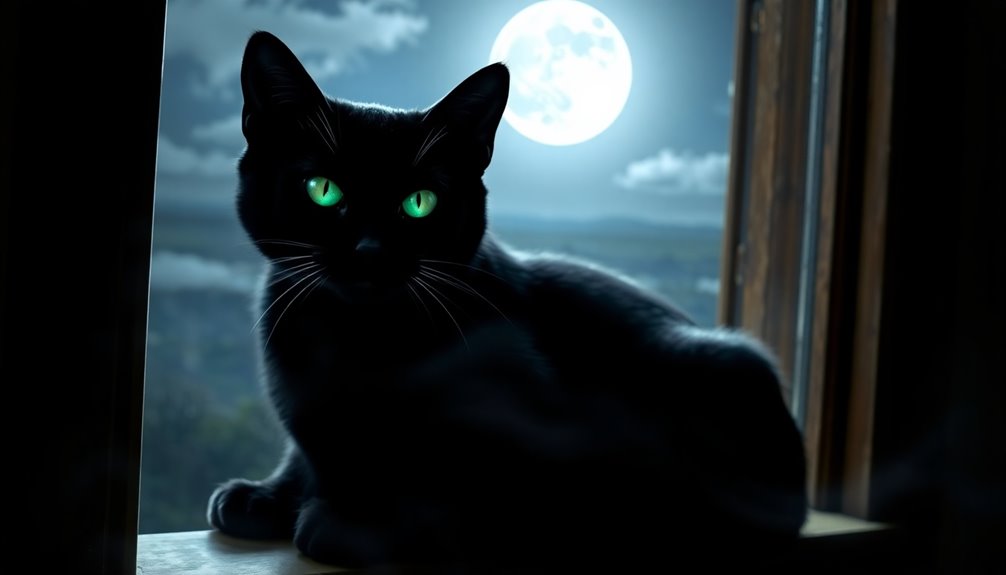
Many people believe that cats hold a unique spiritual significance, acting as guides in our spiritual journeys. They're often seen as spirit animals, connecting us to deeper spiritual energy. When you dream of a cat, it can symbolize independence and self-reliance. This dream might be encouraging you to explore hidden parts of yourself.
In many cultures, cats are powerful messengers in dreams, reminding you to pay attention to their messages. By understanding what a cat symbolizes, you can grow personally and spiritually.
Here's a simple guide to help you understand the connections:
| Spiritual Aspect | Meaning |
|---|---|
| Cat as Spirit Animal | Embrace your intuition and instincts |
| Dreaming of a Cat | Explore independence and self-trust |
| Spiritual Energy | Connects you to higher awareness |
| Role of Spirit Guides | Helps navigate life's challenges |
Engaging with your cat spirit through guided visualization can lead to self-discovery. This practice encourages you to uncover inner truths, promoting a joyful connection to your spiritual path. So, next time you see a cat, remember its special role in your journey!
Cats in Literature and Art

Cats have long captivated artists and writers, serving as symbols of mystery, independence, and companionship. In ancient Egypt, people revered cats as sacred animals. They were linked to the goddess Bastet, representing protection and fertility. You could find them in beautiful art, like jewelry and tomb paintings.
However, during the Middle Ages, cats faced a different fate. They were often seen as symbols of superstition and witchcraft, appearing negatively in art and literature.
As time went on, renowned artists like Leonardo da Vinci and Édouard Manet showcased cats in their works. They captured the grace and independence of these fascinating creatures.
In literature, you meet memorable cats too! Lewis Carroll's Cheshire Cat in *Alice's Adventures in Wonderland* embodies the whimsical nature of cats, while T.S. Eliot's Mr. Mistoffelees in *Old Possum's Book of Practical Cats* highlights their cleverness and mystery.
Today, cats remain beloved figures in pop culture. Characters like Garfield and Hello Kitty bring humor and companionship to life.
Whether in art or literature, cats are truly spirit animals that continue to inspire joy and wonder in our hearts!
Psychological and Emotional Impact
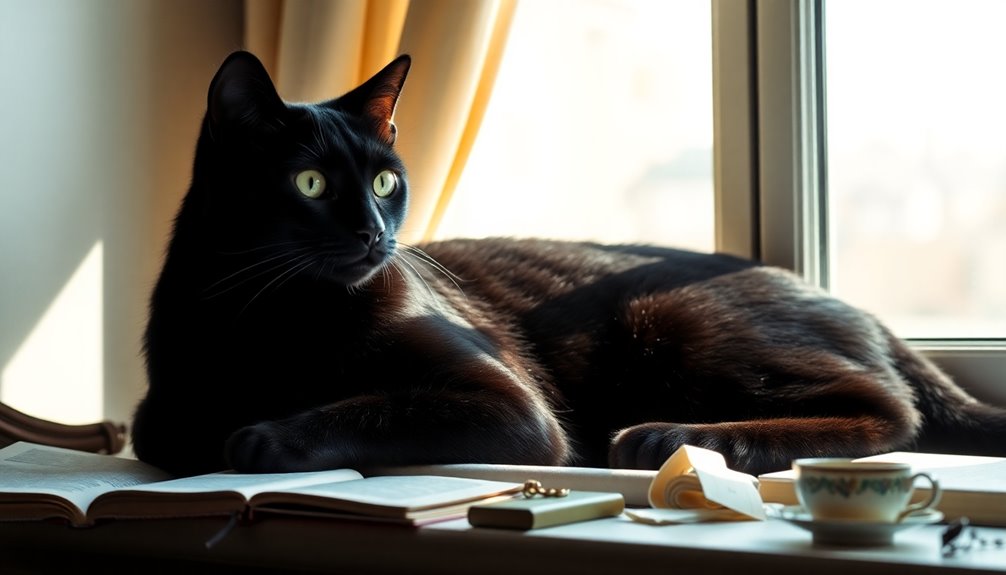
Owning a cat can greatly enhance your psychological and emotional well-being. Cats bring joy and companionship, making them perfect friends for everyone, especially the elderly.
When you spend time with your furry friend, you often feel less stressed and anxious. Studies show that having a cat can lower your blood pressure and heart rate, which is fantastic for your health!
Cats are great at providing emotional support. Their soothing purrs and gentle kneading encourage mindfulness, allowing you to relax and enjoy the moment.
Imagine cuddling with your cat after a long day. That feeling of comfort can help lift your spirits.
Moreover, the bond between you and your cat can evoke happiness and a sense of purpose. Many people share stories about how their cats comforted them during tough times.
The presence of a cat can make life feel a little brighter.
Ecological Role of Cats

Cats aren't just cute companions; they play an important role in nature, too!
As natural hunters, they help control pesky rodent and insect populations, keeping our environment balanced.
However, it's also vital to think about how outdoor cats can impact local wildlife, so responsible cat ownership is key to protecting our precious ecosystems!
Natural Pest Control
Utilizing their natural hunting instincts, domesticated and feral cats serve as effective pest control agents, reducing the populations of rodents and insects in various environments.
These beloved companions are more than just furry friends; they're also natural predators that play an important role in maintaining ecological balance. Did you know that a single cat can catch and kill hundreds of rodents each year? That's impressive!
In both urban and rural settings, their presence helps keep pest populations in check. Feral cats, in particular, are critical for controlling small mammals and insects, preventing overpopulation and supporting a healthy ecosystem.
When you think of a cat totem, envision how these creatures work tirelessly to keep your surroundings pest-free.
Cats are adaptable, thriving in many habitats, which makes them even more effective at managing pest populations. By reducing the need for chemical pesticides, they contribute to a safer environment.
Biodiversity Impact
The ecological role of cats extends far beyond their charming demeanor; these hunters are pivotal in shaping local biodiversity. As you might know, domestic cats are natural predators. They help control rodent populations and insects, which keeps ecosystems balanced and healthy.
However, it's crucial to recognize that their hunting can have a big impact on wildlife communities. Research shows that free-ranging domestic cats kill billions of birds and small mammals each year in the United States alone. This raises concerns about how they affect biodiversity, especially in certain areas.
On the bright side, cats can also be great for pest management in agricultural settings. By naturally keeping pest populations in check, they reduce the need for chemical pesticides. This way, you're not just enjoying a furry companion, but also supporting a healthier environment.
Cats influence the distribution and abundance of prey species, which shapes the wildlife communities around them. So, while they're cute and cuddly, it's crucial to be responsible pet owners. Understanding the biodiversity impact of cats helps you appreciate their role in the ecosystem, while ensuring a balance that protects all living creatures.
Ecological Balance Maintenance
Throughout history, domestic cats have played an essential role in maintaining ecological balance. These furry little hunters help control rodent populations and keep pest populations in check.
Here are some exciting ways cats contribute to our environment:
- They reduce the number of rodents that can damage crops.
- They help limit the spread of diseases carried by pests.
- Feral cats help protect native wildlife by preying on invasive species.
- Their natural hunting reduces the need for chemical pesticides.
- Cats support sustainable agricultural practices, promoting healthier ecosystems.
When you think about it, a single cat can eat hundreds of rodents each year! This not only minimizes crop damage but also creates a healthier environment.
Plus, by hunting invasive species, cats help maintain biodiversity, which is vital for a balanced ecosystem.
Their presence lets local wildlife thrive without overwhelming competition, making nature a better place for everyone.
Cat Symbolism Across Cultures
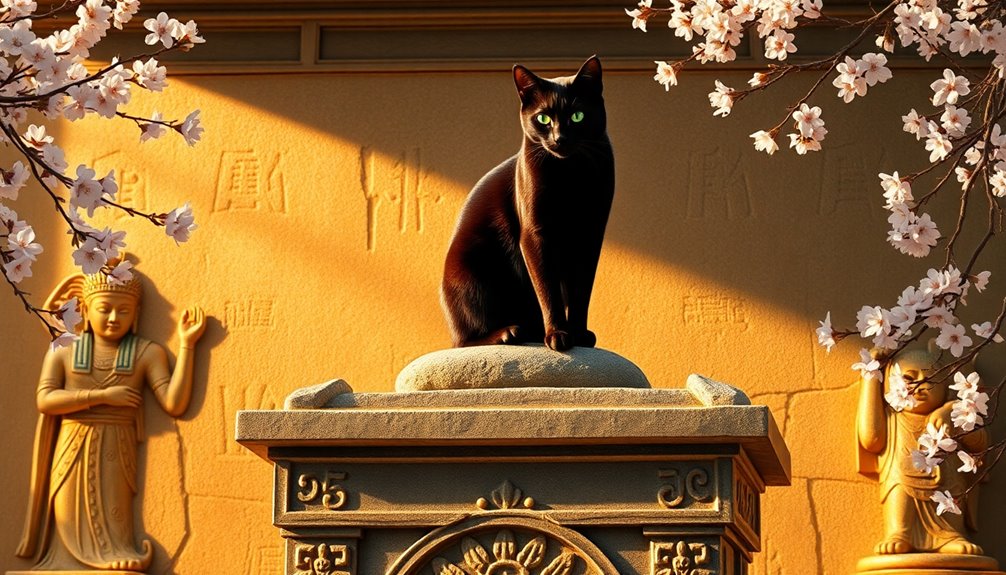
Cats have held a unique place in various cultures, often embodying different meanings and symbolism that reflect societal values and beliefs. In ancient Egypt, cats were revered as sacred animals linked to the goddess Bastet. They symbolized protection and fertility, and many Egyptians even mummified their beloved cats to honor them in the afterlife.
Similarly, in Norse mythology, cats were sacred to the goddess Freyja, representing love and fertility, and were thought to bring blessings to homes.
In Japan, the Maneki-neko, or "beckoning cat," serves as a popular cultural symbol. You might see one with a raised paw, believed to bring good fortune and prosperity!
However, not all cultures view cats positively. In medieval Europe, people often associated black cats with witchcraft, seeing them as omens or companions to witches.
Meanwhile, in Islamic culture, cats are celebrated as clean animals, thanks to the Prophet Muhammad's affection for them. This has led to their revered status and protection in Islamic teachings.
Each culture teaches us something unique about how cats contribute to our world!
Personal Exploration and Independence
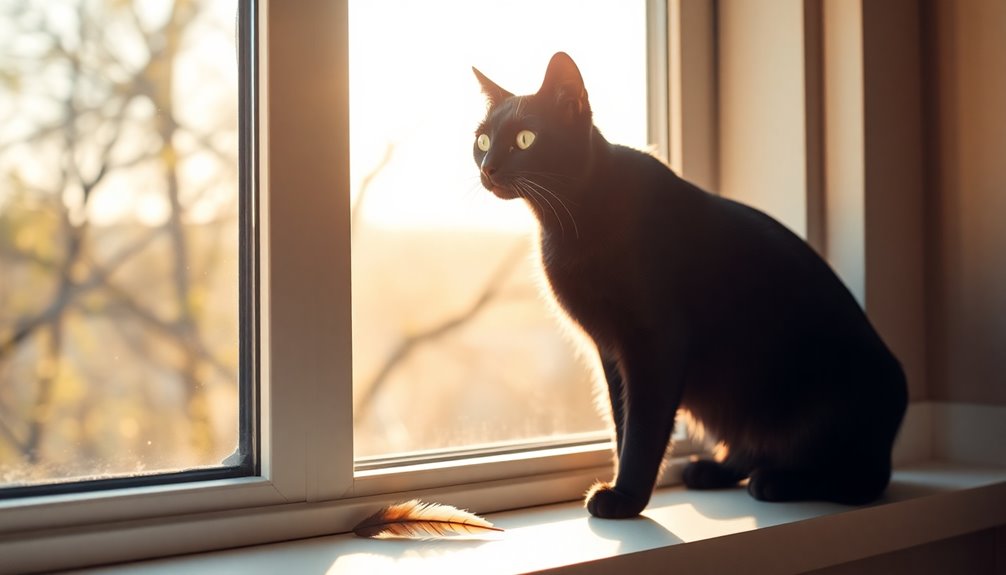
Often, people find inspiration in the independent nature of cats when exploring their own personal journeys. Cats show us how to embrace our independence, encouraging self-reliance and authenticity.
When you look at a cat, you might think about how they balance social time with their need for personal space. This balance is essential for your well-being too!
Here are some ideas to inspire your own exploration:
- Embrace your curiosity and seek new experiences.
- Trust your ability to adapt to different situations.
- Prioritize self-care to nurture your inner self.
- Reflect on your inner truths and desires.
- Learn to enjoy your own company.
The traits of cats—like their curiosity and adaptability—remind you to venture beyond your comfort zone. A growth mindset is key to navigating these personal challenges effectively.
As you explore your personal growth, think about how cats invite introspection and the discovery of who you really are. By tapping into this cat-like wisdom, you'll find that exploring your independence can lead to a deeper understanding of yourself.
Frequently Asked Questions
What Does a Cat Symbolize Spiritually?
A cat symbolizes independence and intuition, encouraging you to trust your instincts.
They often represent a balance between light and dark, reminding you that both sides of life are important.
When you see a cat, think about taking your time and observing your surroundings before making decisions.
Spiritually, cats can guide you to explore hidden parts of yourself, helping you grow and transform into a more complete version of who you are!
What Is a Cat Trying to Tell You?
Did you know that cats can make over 100 different sounds? When your cat meows, purrs, or kneads, it's trying to communicate with you!
Each sound or action can mean something special. If your cat follows you around, it might want attention or playtime. When it curls up next to you, it's showing love and trust.
Pay attention to these signals, and you'll understand your furry friend even better!
What Did Cats Symbolize?
Cats have symbolized many things throughout history! You might think of them as symbols of mystery and intuition, guiding you to explore hidden truths.
In cultures like Japan, they represent good luck and fortune, bringing joy and prosperity.
Their independence shows the importance of balancing personal space with friendships.
Plus, their agility highlights resilience, reminding you that you can navigate challenges and embrace change.
Isn't it amazing how much meaning these furry friends hold?
What Does a Cat Symbolize in Psychology?
You know what they say: curiosity killed the cat, but satisfaction brought it back!
In psychology, cats symbolize independence and self-reliance. They remind you to trust your instincts and navigate your feelings on your own.
Having a cat around can lower your stress levels, making you happier. Their playful nature encourages exploration and creativity.
Plus, when you cuddle with a cat, you feel more relaxed and connected, promoting mindfulness in your busy life.
Conclusion
To sum up, cats are fascinating creatures full of meaning and mystery! Some might think they're just pets, but they represent independence, curiosity, and even spirituality. By exploring their symbolism, you can discover how they connect to cultures, behaviors, and our own feelings. So, next time you see a cat, remember there's so much more to them than meets the eye. Embrace their charm and let their symbolism enrich your life with joy and wonder!

